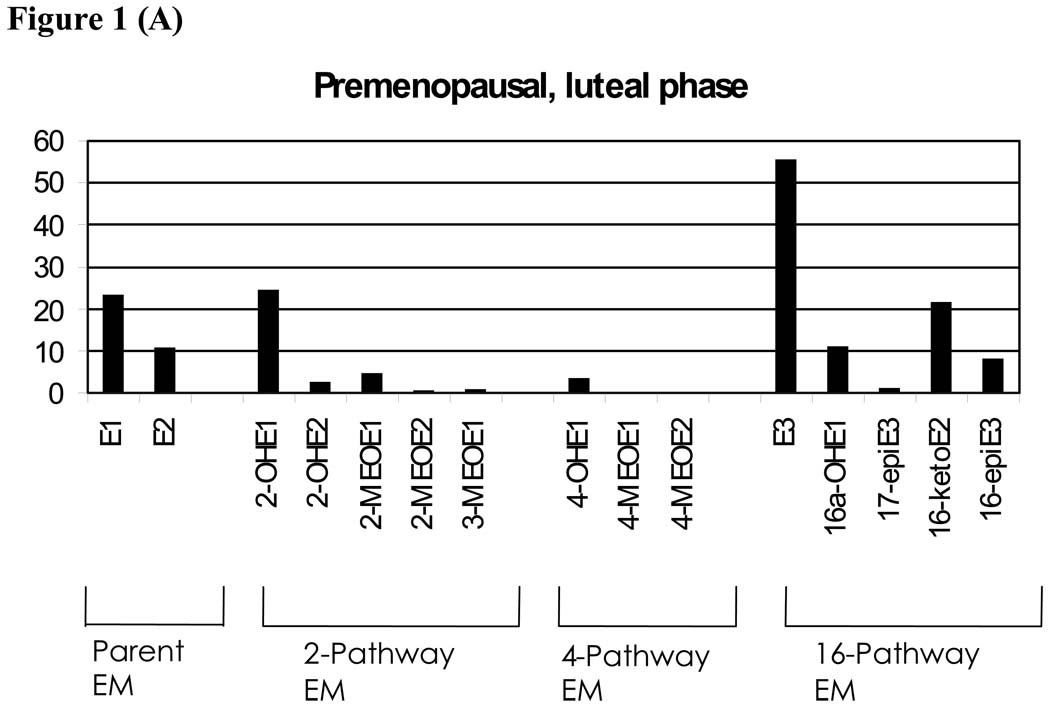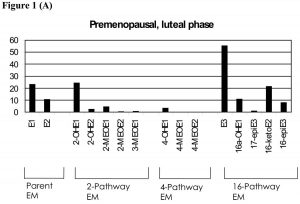
Absolute and relative concentrations of estrogens and estrogen metabolites are vital for scientific choices in addition to for epidemiologic, experimental, and scientific analysis on hormonal carcinogenesis. RIA and ELISA are routinely used for measuring estrogen metabolites in blood and urine on account of effectivity and low price. Here, we evaluate absolute and ranked concentrations of estrone, estradiol, and estriol measured by oblique RIA and of 2-hydroxyestrone and 16alpha-hydroxyestrone measured by ELISA to the concentrations obtained utilizing a novel liquid chromatography-tandem mass spectrometry (LC-MS/MS) technique, which measures 15 estrogen metabolites concurrently. We used in a single day urine samples collected from management ladies (362 premenopausal and 168 postmenopausal) collaborating in a population-based case-control examine of breast most cancers amongst Asian American ladies ages 20 to 55 years.
When evaluating RIA or ELISA ranges to LC-MS/MS, absolute concentrations for the 5 estrogen metabolites ranged from 1.6 to 2.9 and 1.Four to 11.Eight occasions increased in premenopausal and postmenopausal ladies, respectively (all P < 0.0001).
However, LC-MS/MS measurements have been extremely correlated [Spearman r (r(s)) = 0.8-0.9] with RIA and ELISA measurements in premenopausal ladies and reasonably correlated (r(s) = 0.4-0.8) in postmenopausal ladies. Measurements of the 2-hydroxyestrone:16alpha-hydroxyestrone ratio, a putative biomarker of breast most cancers danger, have been reasonably correlated in premenopausal ladies (r(s) = 0.6-0.7) however solely weakly correlated in postmenopausal ladies (r(s) = 0.2). LC-MS/MS had increased intraclass correlation coefficients >> or =99.6%) and decrease coefficients of variation (< or =9.4%) than ELISA >> or =97.2% and < or =14.2%) and RIA >> or =95.2% and < or =17.8%).
Learn More https://maxanim.com/

Comparison with the LC-MS/MS technique means that the extensively used RIA and ELISA estrogen metabolite measures could also be problematic, particularly at low estrogen metabolite ranges attribute of postmenopausal ladies.
Immunoassays for circulating leptin are vital analysis instruments for analyzing the function and regulation of leptin expression in human weight problems. However, uncertainty exists relating to the comparability between research of reported plasma or serum leptin concentrations.
The function of the current examine was to instantly evaluate plasma leptin concentrations through the use of two of probably the most extensively reported immunoassay methods-namely, a commercially accessible radioimmunoassay (RIA) and a proprietary enzyme-linked immunosorbent assay (ELISA). Plasma leptin concentrations have been measured in wholesome lean and overweight volunteers and in sufferers with Prader-Willi syndrome (PWS).
Over a variety of plasma concentrations (2 to 70 ng/mL), leptin measurements obtained with the RIA and ELISA methods have been extremely correlated (r = 0.957, P<.0001) and have been basically indistinguishable. Leptin ranges measured by RIA and ELISA have been extremely correlated with physique mass index (BMI) general (r = 0.784, P<.0001 and r = 0.732, P<.0001, respectively) and within the lean and overweight subgroups.
When in contrast with the leads to the lean people (imply +/- SEM, 11.6+/-3.2 ng/mL), plasma leptin was considerably increased in each the overweight (35.5+/-4.Zero ng/mL, P<.0001) and the PWS topics (30.7+/-6.9 ng/mL, P<.05).
However, after we managed for variations in BMI, the leptin ranges have been comparable in all three teams. In conclusion, we discovered that the RIA and ELISA used within the current examine yield plasma leptin concentrations which might be basically indistinguishable. Our findings ought to facilitate comparisons of leptin ranges measured by these two extensively used immunoassays in earlier and future research that look at the function of leptin in physique weight regulation.